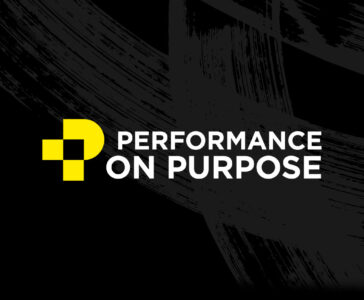The evidence is clear: organizations driven by ideas greater than the services and products they provide outperform those that aren’t.
What once may have seemed niche now has gone mainstream: purpose-driven companies are proliferating and prospering beyond their competitors. Even long-established players are looking to leverage purpose to reimagine their brand, revitalize their customer relationships, and lay a foundation for the changing realities of the 21st century.
The business case for purpose: the bottom line
An organizational purpose is much more than just a statement in language, although a 2018 Corporate Board/EY Global Leadership Forecast found that companies that had a statement of purpose, but did not fully integrate it into their organization still outperformed companies with no articulation of purpose. But those that fully integrated their purpose into their organization and their decision-making outperformed them all (on average outperforming the market by 42%).
A 2019 study by Deloitte goes even further, finding that “Purpose-driven companies witness higher market share gains and grow three times faster on average than their competitors, all while achieving higher workforce and customer satisfaction.”
So why does purpose make the difference?
Purpose is a path to stronger relationships
At its most basic level, purpose is a way to connect all of the relationships that are vital to an organization’s success. It’s something with the gravity to call people toward you that you don’t have a relationship with, and call more from those that you already do. That’s because purpose has the potential to incorporate and reflect the beliefs and aspirations of an organization’s community.
At Fathom, we often begin the road to purpose with an invitation to all those who are considered important to an organization’s future. These groups may include employees, owners, investors, partners/vendors customers, clients, advocates, community partners. We invite representatives from these groups to anonymously share their experiences, beliefs, and aspirations as they relate to the organization. The stories that are being told, and the ones they want to be able to tell are powerful contributions to shaping not just a statement of purpose, but the most meaningful ways to act on it.
Purpose helps organizations stand out and attract prospective employees, and boosts the retention of those who are already part of the team
Purpose-driven companies experience greater productivity, and their employees are more likely to invest their careers there. Deloitte’s research finds “such companies report 40 percent higher levels of workforce retention than their competitors.”
For those seeking a place to work and grow, purpose is a major attractor. LinkedIn surveyed its members and found that 74% “place a high value on finding work that delivers on a sense of purpose.”
And for younger generations, the desire for purpose is even more pronounced. A recent study of U.S. Gen Z job seekers revealed 83% “consider a company’s purpose when deciding where to work.”
And when it comes to attracting top talent, purpose is a powerful attractor. A global 2018 Mercer study on global talent trends found “highest-performing employees are 3x more likely to work for a company with a strong sense of purpose.”
Purpose helps increase customers’ loyalty to brands
When an organization’s purpose aligns with its audience the result is a powerful connection. A 2018 Accenture study of consumer responses to purpose revealed that beyond price and quality of product or service, over half of customers were attracted to buy from companies that “stand for something bigger than just the products and services it sells, which aligns with my personal values”
Meeting needs is still an essential requirement, but by being outspoken about what matters to an organization, and what they are doing in support of it, anyone that engages with that brand also connects with what matters to them. And when there is overlap, the relationship has the potential to develop beyond the transaction of services, into true partnership.
Purpose provides the mindset and motivation to create what’s needed
Purpose can be a helpful, creative constraint when it comes to innovation and adaptation. It anchors a place to think and act from. And when challenging circumstances arise, it can give inspiration to unconventional responses that step out of an organization’s history or benchmarks, while remaining true to the reason that company exists. It’s a catalyst for imagining possible futures and a filter for choosing which to pursue.
EY’s study on the relationship between purpose prospering through disruption shared the perspectives of business leaders, 73% of which felt that “having a well-integrated purpose help[ed] their company navigate disruption.”
Deloitte’s study also found that purpose-driven companies experienced 30 percent higher levels of innovation, a critical muscle in responding to the challenges of a changing landscape.
How do you develop purpose and integrate it into your organization?
At Fathom, we believe in the unlimited capacity of human beings to contribute to what they believe in. So, we uncover what an organization’s entire community believes, values and envisions, and how that aligns with a bold and thriving future for the organization. Often the first step in this process is a series of immersive visioning and strategy sessions called Future Design Day.
We come to an expression of purpose, but just as importantly, we create a plan to act on it in ways that invite conditions for unprecedented business and relationship growth. In our work, we help leaders install a purpose-driven goals-setting system that creates breakthrough results. We also design experiences that bring purpose to life and use it to elevate value and connections. This might involve the creation of a purpose-driven brand, including the way it looks and sounds, or enabling a sales team to represent purpose as a way to elevate conversations and open up new opportunities.
Purpose opens up rich possibilities if leaders and their teams have the tools and courage to act on it. But the rewards are well worth the challenges and effort it takes because organizations driven by ideas greater than the services and products they provide outperform those that aren’t.
Want more from Fathom?
Sign up to receive updates about our articles.


